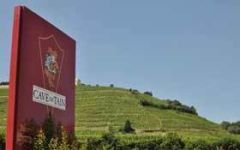Cave de Tain Marsanne 2015
Marsanne
-
Wilfred
Wong
4.2 Very Good
(13)
Sold Out - was $16.99
Ships Thu, May 2
You purchased this 1/28/24
0
Limit Reached
You purchased this 1/28/24



Product Details
Varietal
Producer
Vintage
2015
Size
750ML
Your Rating
Somm Note
Winemaker Notes
Pale yellow color with green hints. Rich nose of white daisy flowers and citrus fruit. Fresh on the palate, with white fruits and vanilla aromas. Easy-drinking, harmonious and crisp wine. This wine is 100% Marsanne.
Professional Ratings
-
Wilfred Wong of Wine.com
The 2015 Cave de Tain Marsanne offers a good lesson into understanding this grape variety—it's origins have been traced back to the Northern Rhône Valley where cool growing conditions allow the grape to ripen well and to property retain its acidity. Pure and bright with aromas of fresh core fruit and dried citrus, this wine shows great vitality on the palate. Enjoy with seared scallops. (Tasted: May 15, 2017, San Francisco, CA)
Other Vintages
2018-
Wine
Spectator
GZT10089947_2015 Item# 162639


